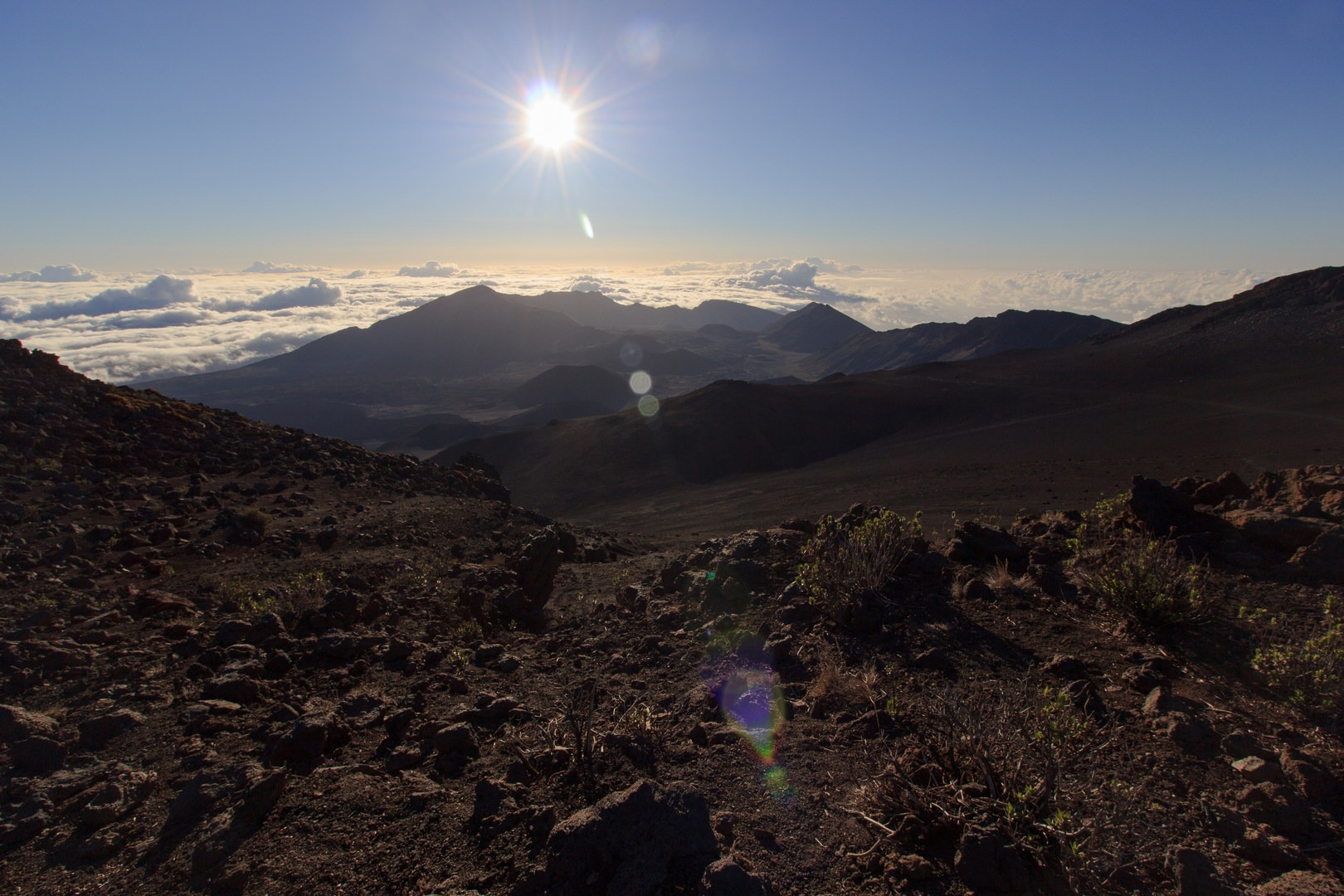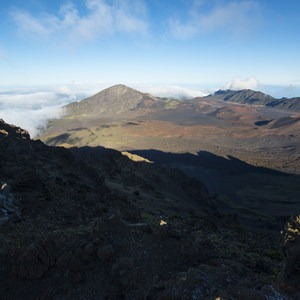Haleakalā, or House of the Sun, is an ancient shield volcano occupying most of the island of Maui. The summit area of this mountain resembles a volcanic crater, but it is actually an erosional valley occupied by cinder cones and remnants of old lava flows. As wind and rain continue to erode the summit area, it is expected that it will someday resemble the rest of Maui as a rich, lush land teeming with life.
The Sliding Sands Trailhead is located at the summit area visitor center, where restrooms and potable water can be found. Be sure to stop in at the visitor center to check out some information about the summit area, pick up a map, and chat with a helpful ranger. This is the only official trail that descends into the erosional valley from the summit of Haleakalā. If you can, try to arrive in time to watch the sunrise from the visitor center before your hike, but be sure to get there early as there can be many other visitors sharing the view.
When planning this hike, it is important to consider the fact that you are starting at the highest point of the trail and hiking over 2,000 feet down before turning around to hike back up. Be aware of your limitations and always consider your ability to hike back up the steep trail you just came down. The trail switchbacks most of the way down through fine, loose ash - hence its name. About 2 miles down the trail you'll find an apparently closed spur trail to a cinder cone. There is a small rock barrier built up clearly indicating a closure; some maps indicate this trail as open, others do not indicate it at all.
As you descend, you may see small patches of silversword plant. Most of the plant life on the Hawaiian islands are invasive species. The summit area of Haleakalā, specifically the area higher than 6,900 feet, is the only place in the world one can view the indigenous 'Āhinahina (silversword) plant. It is a small plant with sword-like leaves that are covered by tiny silver hairs. Between July and October it forms a stalk of maroon ray flowers that can grow up to 6.6 feet high. This unique plant was at risk of becoming extinct in the 1920s due to overgrazing by livestock and vandalism. Thanks to government protection, the plant is now beginning to thrive again.
The trail intersects with another trail on the valley floor at this route's lowest point. There is an open area with a sign indicating distances to other trails that form a network across the valley. If you aren't making the return ascent, another option is to continue on the Halemau'u Trail that ascends the northwest rim of the valley to another trailhead. There is actually a designated hiker pick-up area on the road here where drivers can stop to return hikers to their vehicles at the summit area visitor center. From this junction on the valley floor, the Sliding Sands Trail continues on another 5 miles all the way to the eastern rim, where a campground and backcountry cabin can be found. The route back up is steep, but as the light changes and the potential for clouds to move into the valley increases, your scenery can look different. The unimpeded views of this unique landscape are abundant and variable. Enjoy!









Comments
Sign In and share them.